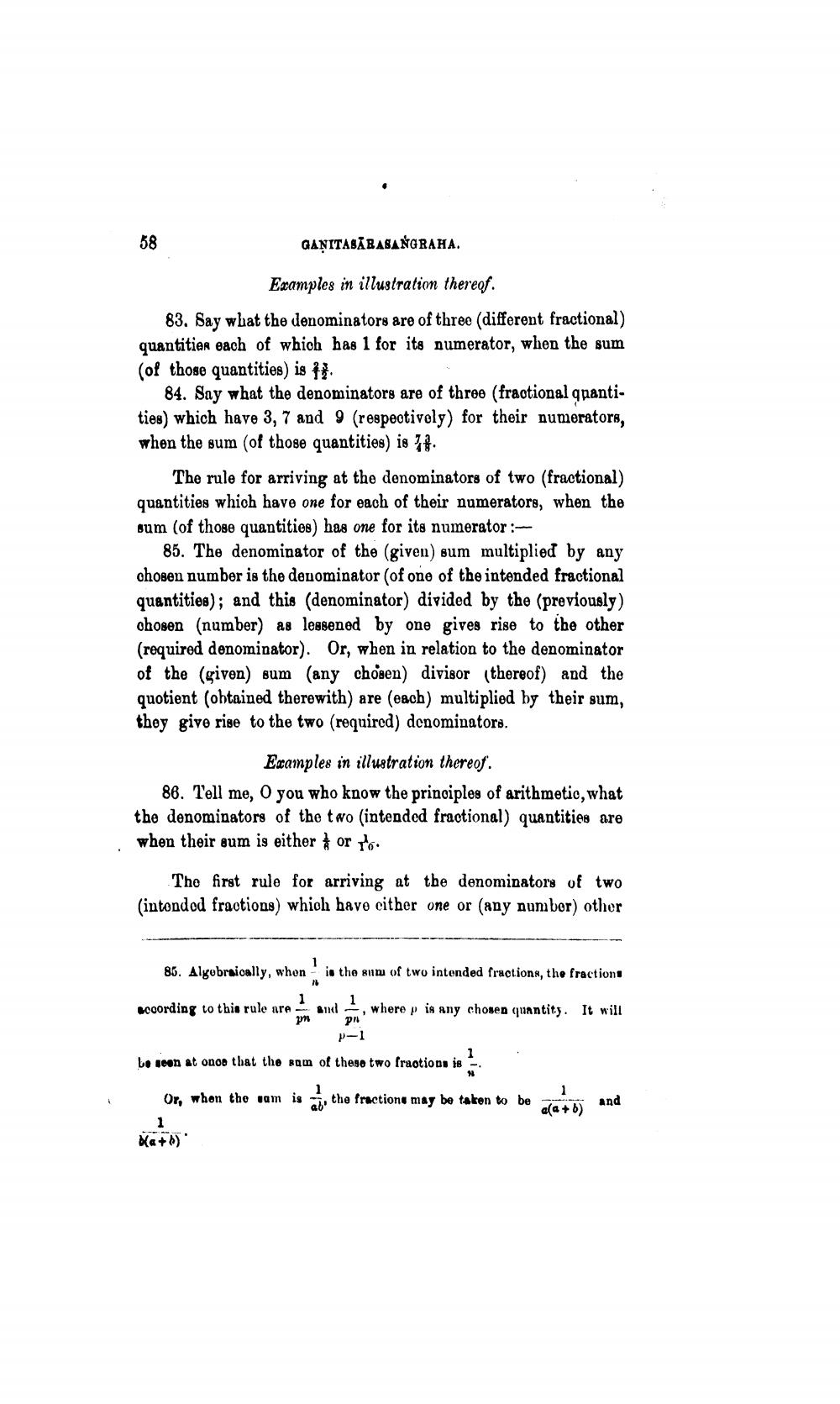________________
GANITASĀBASANGRAHA.
Examples in illustration thereof. 83. Say what the denominators are of three (different fractional) quantitien each of which has 1 for its numerator, when the sum (of those quantities) is it.
84. Say what the denominators are of three (fractional quantities) which have 3, 7 and 9 (respectively) for their numerators, when the sum (of those quantities) is 78.
The rule for arriving at the denominators of two (fractional) quantities which have one for each of their numerators, when the sum (of those quantities) has one for its numerator:
85. The denominator of the (given) sum multiplied by any chosen number is the denominator (of one of the intended fractional quantities); and this (denominator) divided by the (previously) chosen (number) as lessened by one gives rise to the other (required denominator). Or, when in relation to the denominator of the (given) sum (any chosen) divisor (thereof) and the quotient (ohtained therewith) are (each) multiplied by their sum, they give rise to the two (required) denominators.
Examples in illustration thereof. 86. Tell me, O you who know the principles of arithmetic, what the denominators of the two intended fractional) quantities are when their sum is either or to
The first rule for arriving at the denominators of two (intended fractions) which have cither one or (any numbor) other
86. Alyobraioally, whon
in the bim of two intended fractions, the fractions
according to this rulo ure in and out, where p is any chosen quantits. It will
pn
pri P-1
Le soon at onoo that the sam of these two fraotions is -
Or, whon the sam is an the fractions may be taken to be alat b) and
Na+)




